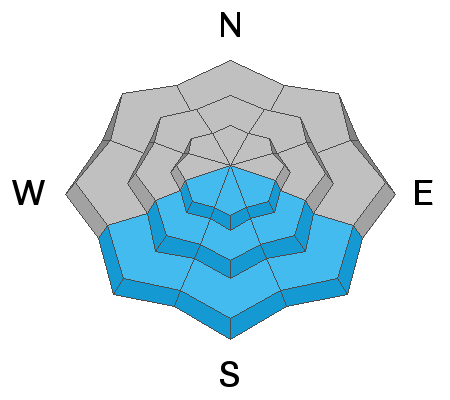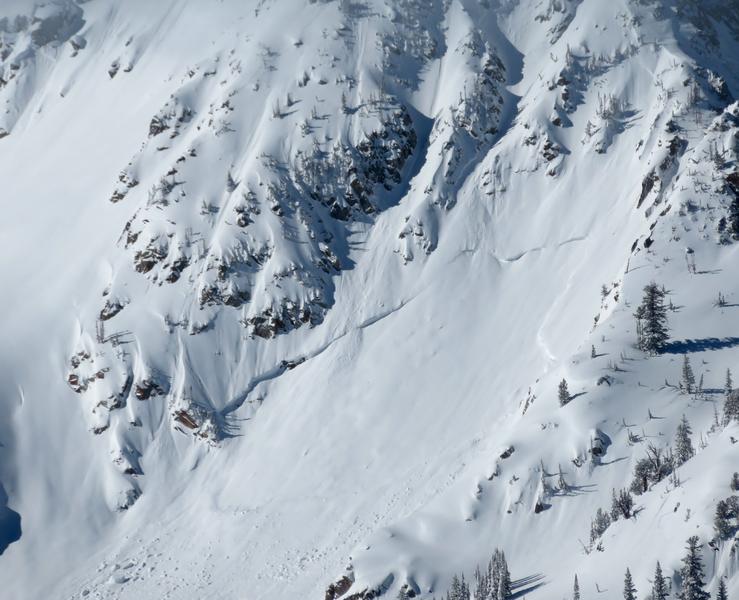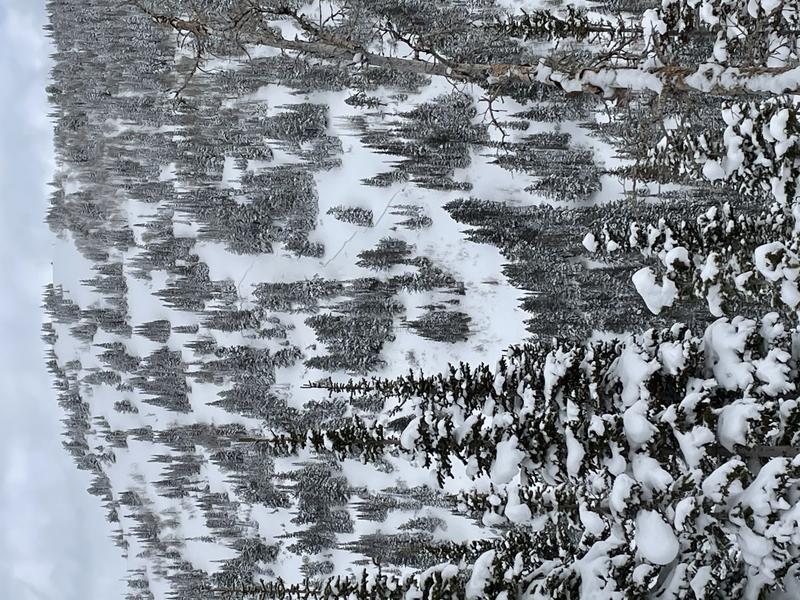On Monday, February 22, at 7 PM, the UAC will livestream a one hour review and debrief of the tragic
Wilson Glades avalanche accident, followed by a Q & A period. The link for registration is
HERE.
A good primer for this will be to listen in to Friday's RadioWest conversation about avalanches and the incident. Stream it
here or wherever you get your favorite podcasts.
This morning, skies are overcast and mountain temperatures range from the mid to upper teens F. The west-northwesterly winds have begun dropping since yesterday, currently averaging 5-15 mph with gusts near 40 mph at the highest ridgelines.
Today, low clouds will sit over the mountains before clearing late morning. Temperatures will rise and skies will become mostly sunny with a few passing high clouds this afternoon. Temperatures will settle into the high 20s and 30s F. The west-northwesterly winds will average 15-25 mph, with gusts up to 45 mph at the highest ridgelines.
Yesterday, the snow surface became damp in the afternoon at lower elevations and southerly aspects. Expect to find a firm crust this morning. The best riding conditions will be found in sun sheltered and low-angle terrain.
It finally feels like we have a real winter under our feet. Coverage is pushing 80-120" in the higher reaches of the Cottonwoods and 50-70" along the PC ridgeline. Last week was a blur. Read more about it in Greg Gagne's patented Week in Review.
Dangerous avalanche conditions consume the West: The backcountry community has suffered 23 avalanche fatalities in 23 days, the most recent from Idaho and Nevada.
INFO. Utah is up to 6 avalanche fatalities for the season.
Ski area control teams and backcountry travelers along the higher alpine ridgelines noted sensitive cornices yesterday. Patrol noted one larger avalanche off the Park City Ridgeline that failed remotely from 150' away in faceted snow 60cm above the ground on an East Aspect at 9500'. This is a good reminder that these avalanches can be triggered from a distance.













